
Christian Gottfried Ehrenberg was a German naturalist, zoologist, botanist, comparative anatomist, geologist, and microscopist. He is considered to be one of the most famous and productive scientists of his time.

Johann Adam Hiller was a German composer, conductor and writer on music, regarded as the creator of the Singspiel, an early form of German opera. In many of these operas he collaborated with the poet Christian Felix Weiße.

Adam Friedrich Oeser was a German etcher, painter and sculptor.

Wilhelm Abraham Teller was a German Protestant theologian who championed a rational approach to Christianity.

Christian Gottfried Körner was a German jurist. His home was a literary and musical salon, and he was a friend of Friedrich Schiller.

Elias Gottlob Haussmann was a German painter in the late Baroque era. Haussmann served as court painter at Dresden, and from 1720, as the official portraitist at Leipzig. He is mostly known for his portrait of Johann Sebastian Bach which was painted in 1746.
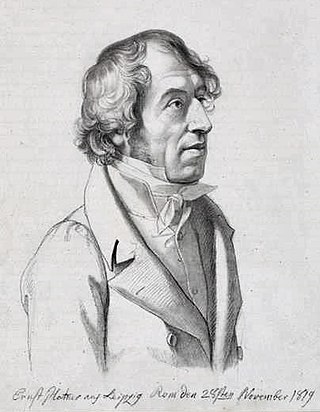
Ernst Zacharias Platner was a German painter, writer, and diplomat.

A Musen-Almanach was a kind of literary annual, popular in Germany from 1770 into the mid-19th century. They were modelled on the Almanach des Muses published in Paris from 1765.

Johann Martin Miller was a German theologian and writer. He is best known for his novel Siegwart, which became one of the most successful books at the time.

Johann Sebastian Bach was a German painter. He was the son of composer Carl Philipp Emanuel Bach and the grandson of composer Johann Sebastian Bach.
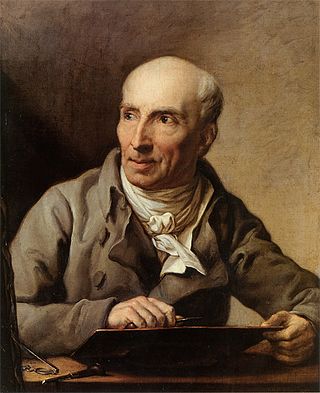
Johann Friedrich Bause was a German copper engraver; primarily of portraits.

Christian Felix Weiße (1726–1804) was a German writer and pedagogue. Weiße was among the leading representatives of the Enlightenment in Germany and is regarded as the founder of German children's literature.
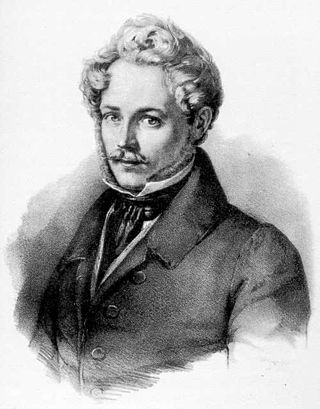
Ernst Fries was a German painter, draftsman, watercolourist, etcher, printmaker, and lithograph. Besides Karl Philipp Fohr and Carl Rottmann, he was the youngest of the so-called triumvirate of Heidelberg Romanticism. His works represent a transition from Romanticism to Realism.
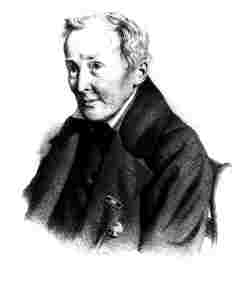
Wilhelm Gottlieb Tilesius von Tilenau was a German naturalist and explorer, physician, draftsman and engraver. He was a member of the Order of St. Vladimir and of the Legion of Honour.
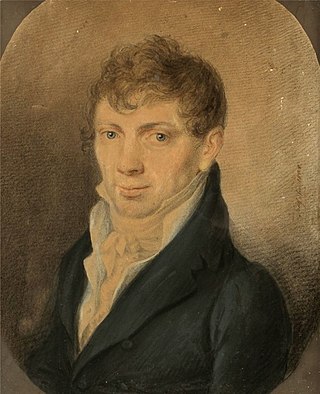
Karl August Senff was a Baltic German painter, engraver and teacher. He is best known for his etchings of famous German and Baltic German military figures in service to the Imperial Russian Army. He served as professor of drawing at the University of Dorpat from its reopening in 1802 until his death in 1838 where he trained some of Estonia's most celebrated artists.
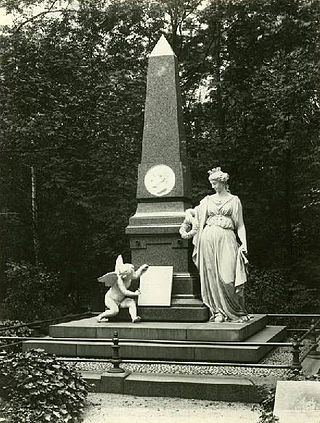
The Alter Johannisfriedhof is the oldest burial ground in the city of Leipzig, Germany. It began in 1278, as part of the Johannishospital in Leipzig, a leper hospital. It was later attached to the Johanniskirche, which was destroyed in World War II. In 1536 it became the common burial ground for the city of Leipzig, and expanded several times. It was also re-modeled in the style of the Camposanto in Pisa, a popular style of cemetery in Germany. In 1680 and 1805 the graveyard was expanded by the additions of sections three and four respectively, then the fifth and the final extension took place between 1827 and 1863. 1883 saw its last burial.

Gottfried Wilhelm Fink was a German composer, music theorist, poet, and a Protestant clergyman.

Jacob Wilhelm Mechau (1745-1808) was a German landscape painter, graphic artist and etcher. His style was part of the transition from Classicism to Romanticism.

Carl Gottfried Eybe (1813–1893) was a 19th-century German painter, lithographer and sculptor.
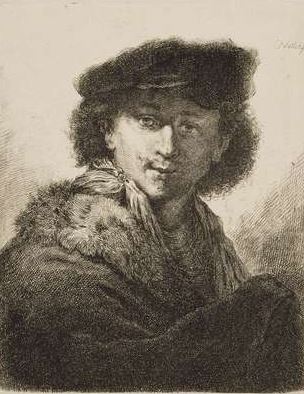
Christoph Nathe was a German miniaturist, watercolorist and etcher.





















